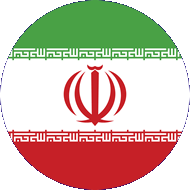The price spread between Brazilian high iron content Iron Ore Carajas (IOCJ) and seaborne medium brand fines has been bogged down by sluggish demand fundamentals amid diminished mill margins, higher portside stocks in China and limited support for Brazil’s export prices despite the rainy season, market sources told S&P Global Commodity Insights Sept. 8.
While the Platts Iron Ore Index, or IODEX, approaches the $120/dmt CFR China level, the spread with the high Fe 65% material has narrowed significantly in recent days to over a three-year low on the back of poor buying interest for delivered cargoes in the two to eight weeks forward window from Chinese mills in September.
The 65%-62% Fe spread, typically an indication of a preference for higher 65% Fe content fines compared with the medium 62% Fe fines, fell to multi-year lows Sept. 4 when demand and buying inquiries remained sparse.
The spread was last time narrower Aug. 18, 2020, at $7.85/dmt, S&P Global data showed.
With lukewarm production margins keeping demand for high Fe fines on the back burner, as mills pivoted toward lower iron content materials for cost competitiveness, a China-based iron ore trader said “Lower Fe fines are in greater demand now, so we see a narrower spread between 65 and 62 [% Fe fines].”
According to sources, dull HRC and rebar margins have also been reflective of mills’ preferences in moving away from the usage of high Fe fines, with the cost of production remaining a pertinent consideration for their operations.
Demand for IOCJ fines from steel mills has been lackluster amid poor finished steel production margins in China, where most domestic steel mills prefer to use medium-grade fines instead of high-grade fines, S&P Global reported earlier.
It makes sense since steel profits are not doing good, 65%-62% Fe spread should narrow further,” an east China-based iron ore trader said.
Meanwhile, the Asian iron ore market has witnessed positive import margins for close to three months, when seaborne purchases were more cost-competitive on an import-parity basis, compared with equivalents from the Chinese portside.
No one will use high-grade fines when margins are bad [and] medium-grade fines are seeing import margins in October,” a north China-based iron ore trader said.
On the supply front, despite Brazil’s transition into the rainy season in the fourth quarter, market sources noted a limited impact on the availability of IOCJ in the spot market amid regular exports from the South American miner.
Heavy rains in Brazil have not affected the export volumes of Carajas fines, said an international trader, adding that the export volumes remained resilient amid no supply tightness heard for high Fe fines in the market.
There may be some impact from the rains but since it’s an annual occurrence, that seasonal impact has already been factored in,” a second north China-based iron ore trader said.
From Q3 to date, there have been nine trades of IOCJ in the seaborne market so far with an aggregate volume of 1.54 million mt, up from 1.12 million mt in Q2, according to S&P Global data. The volume is also much higher from 1.07 million mt in Q1.
The IOCJ portside stock was also at a three-year high of close to 2.3 million tons at Caofeidian and Jingtang ports as of Sept. 5, compared with 1.3 million tons last year, sources said.
Because portside availability is higher than usual … we see the spread narrowing,” a second China-based iron ore trader said.
S&P Global expected the 65% Fe to 62% Fe spread to start to narrow later in the year as the price of the benchmark 62% Fe IODEX drops before widening in Q2 2024 on seasonally stronger market conditions.
Platts assessed the 65% Fe CFR Qingdao index at $126.3/dmt Sept. 7, down $1.80/dmt on the day, S&P Global data showed.




